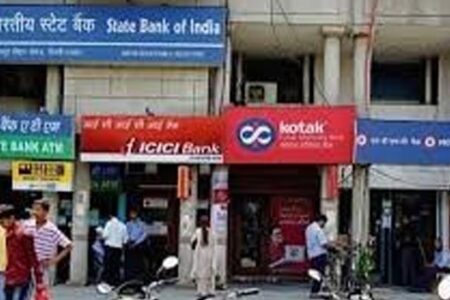In Samuel Beckett’s Waiting for Godot, Vladimir and Estragon wait for the arrival of the mysterious Godot, who continually sends word that he will appear but never does.
After the latest news on JP Morgan Chase and Co’s decision not to include India’s government bond market into its benchmark index, one gets tempted to compare the Government of India and the Reserve Bank of India (RBI) with the two tramps, Vladimir and Estragon, who have been eternally waiting for ‘Godot’ — India’s inclusion in global bond indices.
FTSE Russell, a subsidiary of London Stock Exchange Group, that produces, maintains, licenses, and markets stock market indices, too, has decided to keep Indian government bonds on its watch list for a possible inclusion in its emerging markets debt index till March 2023, when the next assessment will happen.
India’s little over $1 trillion government bond market is the largest in the emerging world that is still not included in the global indices. An early September Morgan Stanley report was optimistic about its inclusion in the JP Morgan Government Bond Index-Emerging Markets (GBI-EM) indices. Launched in June 2005 as the first comprehensive global local emerging markets index, GBI-EM tracks local currency bonds issued by emerging market governments.
In October 2021, India was put on the watch list with 60 per cent of the investors supporting the decision. At that time, JP Morgan had said that India needed to improve market access, trading and settlement to achieve index inclusion. But Russia’s exclusion from the index, following its invasion of Ukraine in February, changed the scenario, brightening the prospects of India’s inclusion.
Russia had around 8 per cent weight in the GBI-EM index. After its exclusion, China, Indonesia, Thailand, Malaysia, Brazil, Mexico and South Africa — seven of the 20 countries in the index — have a 10 per cent weight each. Historically, the top seven countries had an average of 64 per cent weight of the index in contrast to 70 per cent now. India’s inclusion was expected to rebalance the index and diversify weights. In fact, India was widely expected to join the 10 per cent club and eat into the share of some of the existing members.
Had that happened, there would have been a $30-billion inflow into the government bond market in India. Going by data from the Clearing Corporation of India Ltd, which settles the government bond market transactions, as on October 8, foreign investors own around $10 billion worth of such bonds.
The much-anticipated inclusion has not happened. Why?
Analysts are citing different reasons.
One of these is high taxation. Once a bond is sold within a year, it attracts up to 30 per cent capital gains tax. Besides, the foreign portfolio investors need to pay 5 per cent withholding tax on interest income.
Settlement could also be an issue, they say. India is apparently insisting on settling them onshore and not on an international platform like Euroclear. The global settlement platform ensures smooth clearing and settlement. Founded in 1968 to settle trades on the then developing Eurobond market, Euroclear specialises in the settlement of securities transactions as well as the safekeeping and asset servicing of these securities.
The most critical factor is the current process of setting up a foreign portfolio investment account. It is extremely cumbersome, involving stringent know-your-customer, or KYC, norms.
Interactions with some of the investors and other constituents of the market give me the impression that taxation is not standing in the way and the RBI doesn’t have reservations about settlement on Euroclear. In terms of infrastructure — trading, settlements and transparency — India is a sophisticated market, better than most developed economies.
Since June 2021, the RBI has been fine-tuning some of the reporting norms, giving more flexibility to foreign investors for buying government bonds. It has also allowed banks to lend to them for the so-called margin requirements.
Ahead of that, in 2020, the RBI had removed limits on foreign ownership in certain bonds by introducing the Fully Accessible Route (FAR). There are currently 20 such bonds and the total outstanding is $263 billion. The Morgan Stanley report assumes that every month $10 billion worth of new bonds will be included in the FAR list. This will lead to a substantial rise in the outstanding pile, making India the second-biggest bond market after China.
There is appetite for Indian bonds, and both the RBI and the government are aware of the fact that inclusion in global bond indices plays a critical role in influencing investment decisions and the cross-border flow of debt capital. Efforts will be on to make it happen a year down the line.
Ever since we opened up the capital markets to foreign investors, the flow of debt has roughly been one-third of equity. There have been many years when the debt flow has been negative. Even though the equity market opened up for foreign investors immediately after economic liberalisation in September 1992, the norms for foreign investment in debt were released in 1995; and in 1997, Rs29 crore trickled in.
In 2014, when India was facing its worst current account deficit and the value of the rupee faced sharp depreciation against the US dollar, the RBI discussed with JPMorgan about getting into the index. But that did not happen because of the strict regulations on foreign exposure to the Indian debt market in terms of maturity, quantum of investment and the profile of the debt instrument. The scenario has changed since then.
Increasing foreign presence in the debt market will release the pressure on our banks and free up money for lending as demand for loans is picking up in the world’s fifth-largest economy.
In the Covid-hit FY2021, the gross borrowing of the government zoomed to Rs13.7 trillion (net Rs11.43 trillion), almost double of the previous year (when gross borrowing was Rs7.10 trillion and net, Rs4.74 trillion). Last year, it dropped to Rs11.27 trillion (net Rs8,63 trillion) before rising to its historic high of Rs14.31 trillion this year (net Rs11.61 trillion). On top of this, there are state development loans.
Many say that even if India opens up its debt market, foreign investors will not be too excited unless the return is handsome vis-à-vis US bonds. The average differential or spread between the 10-year Indian bond and the US paper over the last 20 years has been 4.39 per cent. The current spread is 3.57 per cent. It has shrunk over 1.13 percentage points in the past year.
Since foreign investors carry the currency risk, if the rupee depreciates more than the spread, they lose. On the other hand, if they hedge against the currency depreciation, the hedging cost will eat into their returns. Typically, most of them don’t hedge; they build in the currency risk in the pricing of the bonds.
That’s the risk the investors need to manage. There are risks for the government and the RBI, too. Entry into global indices will complete the integration of the Indian debt market with the global markets. This means, foreign investors can dump Indian debt to earn more in other markets. This will push up the yield and raise the government’s cost of borrowing.
It seems India is ready to take the risk. If it wants to grow at 7-8 per cent every year, there is no choice but to welcome foreign capital flow into the debt market as domestic savings cannot support this growth.
The wait is indeed getting longer but it’s certainly not an absurd drama like Waiting for Godot.



